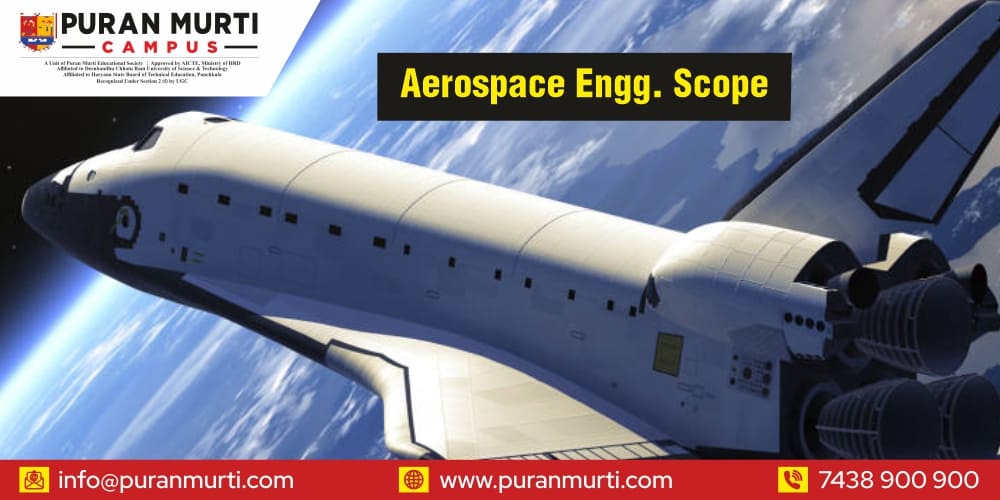Aerospace Engineering Scope
Posted on : 24 June, 2025 2:18 pm
Aerospace Engineering Scope: Is It Really Worth Reaching for the Stars?
Aerospace Engineering Scope: Is It Really Worth Reaching for the Stars?
Let’s be honest: if you’ve ever dreamed of building rockets, designing futuristic planes, or even contributing to Mars missions—Aerospace Engineering probably has a special place in your heart.
But somewhere between passion and practicality comes the big question:
👉 “What’s the scope of aerospace engineering?”
Is it only for the elite few in ISRO or NASA? Or is there a real career opportunity awaiting you?
Let’s get real—no beating around the bush.
🚀 First Things First: What is Aerospace Engineering?
Aerospace Engineering is the field of engineering dealing with aircraft, spacecraft, satellites, and missiles. It’s actually split into two:
Aeronautical Engineering – deals with aircraft which fly within the Earth’s atmosphere.
Astronautical Engineering – it’s spacecraft flying off the planet.
Actually, it’s the art and science of getting things to fly—across town or across the galaxy.
🌍 The Scope of Aerospace Engineering: How Big Is It, Really?
1. A Growing Global Industry
The global aerospace industry is thriving:
Commercial air travel is expanding annually.
Space exploration is growing beyond what governments alone used to do—private industries such as SpaceX, Blue Origin, and Boeing are pioneering missions.
Satellite technology, defense, and drones are always on the move.
💡 Fact: The global aerospace industry can be anticipated to grow to more than $430 billion within a couple of years’ time, according to recent reports.
2. Opportunities in India
In India, the aerospace engineering landscape has expanded tremendously due to:
ISRO (Indian Space Research Organisation) expanding space missions
Private enterprises such as Skyroot Aerospace and Agnikul Cosmos
DRDO, HAL, and BrahMos for defense R&D
India is designing satellites, launching rockets, and even conceptualizing human space mission such as Gaganyaan. Who do you think constructs all of that? Aerospace engineers.
3. Career Jobs Available
Depending upon the strengths and area of interest that you possess, the following careers you can consider are:
Design Engineer (components of aircraft/spacecraft)
Propulsion Engineer (jet and rocket engine propulsion systems)
Flight Test Engineer
Satellite Engineer
Avionics Engineer
Mission Control Specialist
Aerodynamics Analyst
Aside from that, with solid foundations, it is easy to make a career shift to data science, AI in aviation, or drone technology.
4. Targeted Jobs
Aerospace engineers are employed at:
Space agencies (ISRO, NASA, ESA)
Aircraft companies (Boeing, Airbus, Lockheed Martin)
Defense organizations (DRDO, HAL, ADA)
Tech startups (developing drones, satellites, AI-powered aircraft)
Research institutes and colleges
5. Post Graduate and Research
If R&D excites you, then aerospace is an innovation goldmine. You can:
Seek M.Tech or MS in India or overseas (MIT, Stanford, TU Delft anyone?)
Design new materials, hypersonic, or space robot projects
Fly on international missions, from colonies on the moon to Mars rovers
📈 Future Trends = More Scope
The future looks good—and a little sci-fi–sounding in the best way:
Reusable rockets (hurray, SpaceX)
Electric and hybrid planes
Space tourism
Urban air mobility (i.e., flying taxis)
AI in aerospace and aviation defense systems
In short: aerospace isn’t slowing down—it’s taking off.
💡 Skills You’ll Need
While the scope is huge, so is the competition. To stand out, you’ll need:
Strong grasp of math and physics
Hands-on skills with CAD tools and simulations
A curious mind for problem-solving and innovation
Knowledge of programming (Python/MATLAB helps a lot)
Teamwork and communication (no mission flies solo!)
🧑🚀 Final Thoughts: Is Aerospace Engineering Worth It?
If you’re the kind of person who‘s excited by space launches, cutting-edge technology, or being able to utter “What’s next?—”then yes, aerospace engineering is definitely worth it.
It’s a career in which your brainstorming sessions don’t remain on paper—they can actually quite literally soar into the sky or space. The scope is broad, the horizon is sunny, and the thrill? Unmatched.

